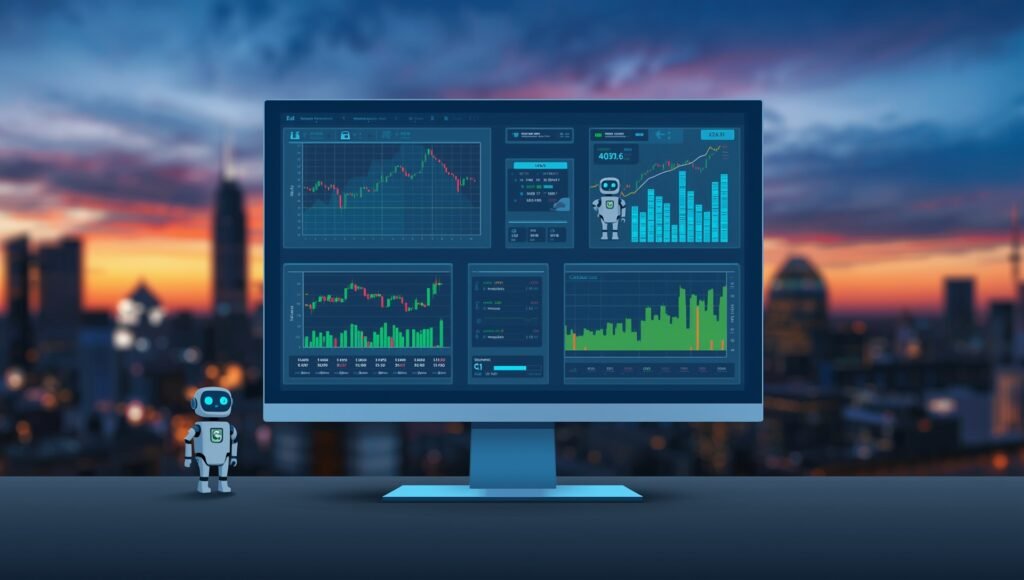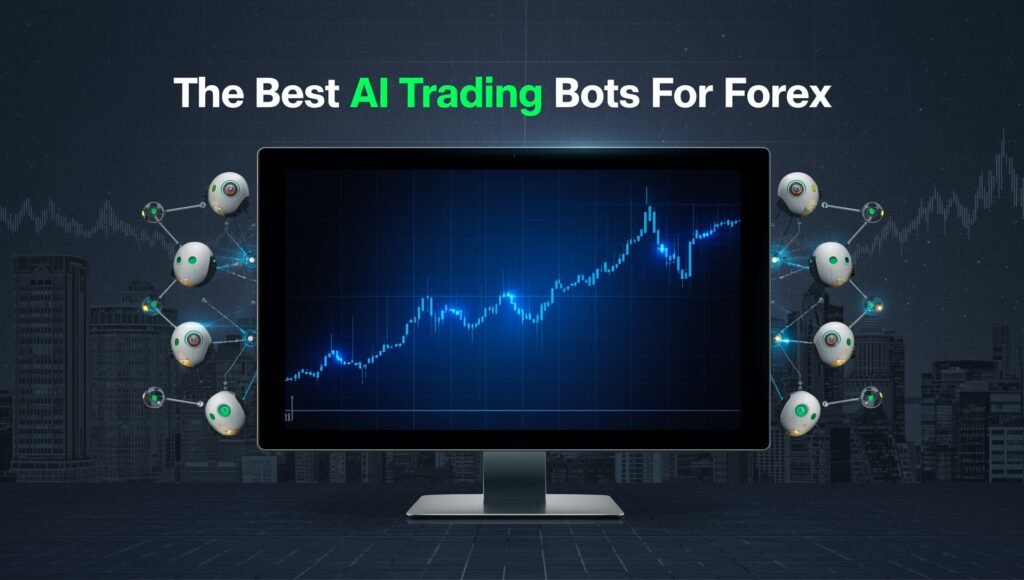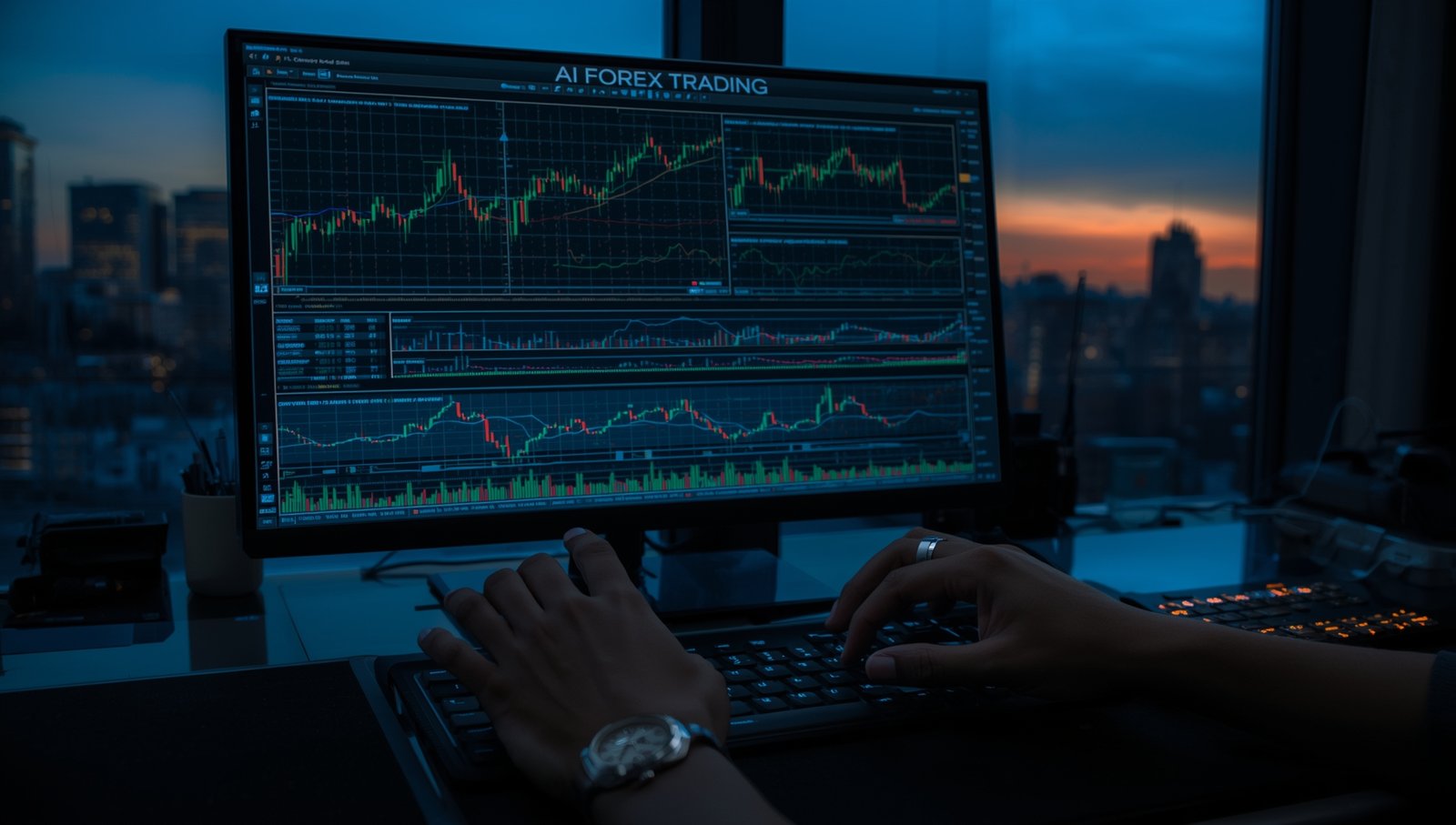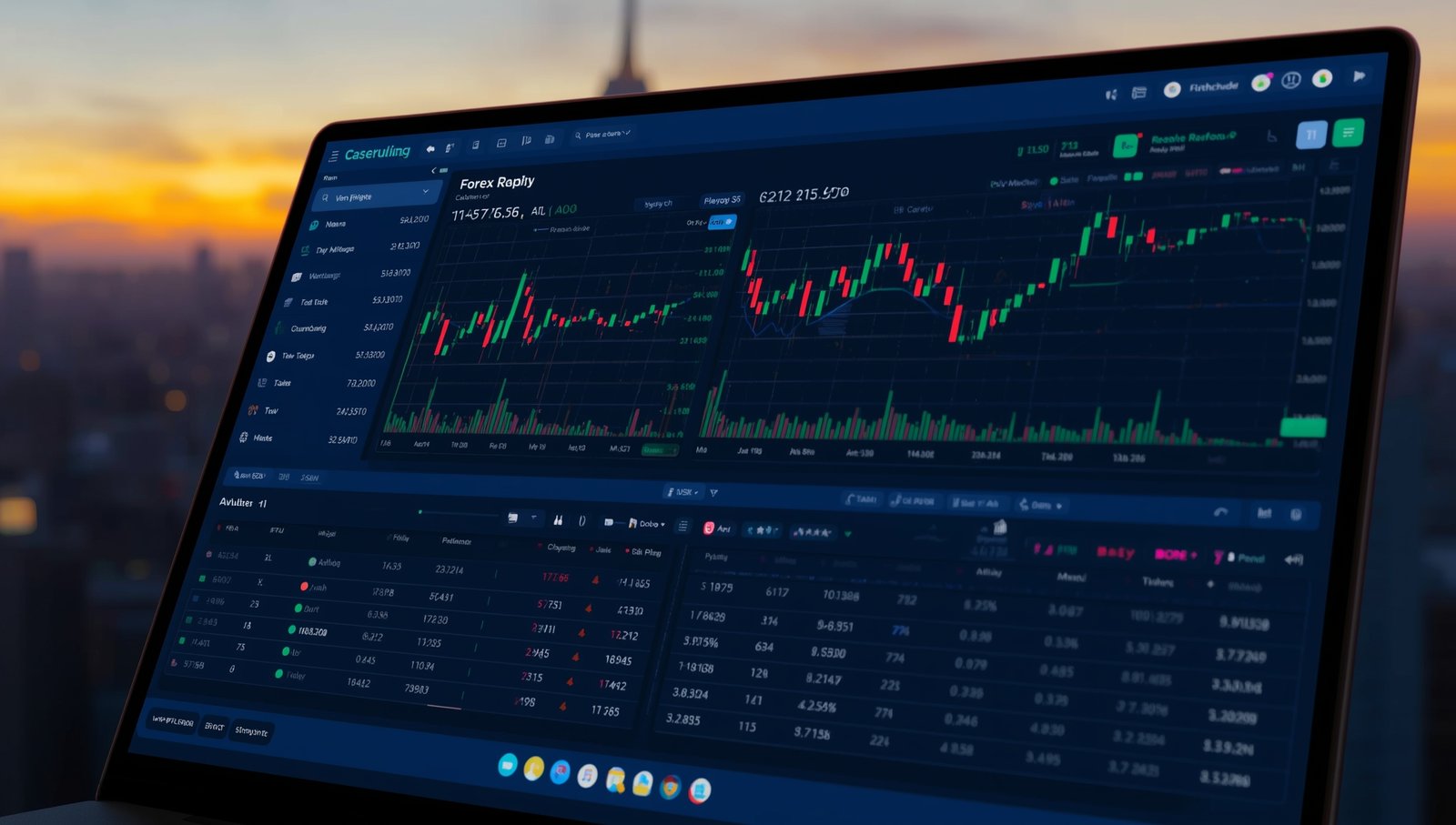Algorithmic trading has transformed from a tool reserved for Wall Street institutions into technology accessible to individual traders. AI trading bots now execute trades across multiple markets, analyzing data patterns that human traders might miss. These automated systems operate in forex, stock, and cryptocurrency markets, offering traders tools to potentially improve their market participation.
AI trading bots use algorithms to analyze market data and execute trades automatically across forex, stocks, and crypto markets. These tools vary in complexity, cost, and features, with some offering backtesting capabilities while others focus on specific market conditions.
Understanding how these systems work and what distinguishes effective bots from ineffective ones helps traders make informed decisions about incorporating automation into their strategies.
Understanding AI Trading Bot Technology
AI trading bots process market data using programmed algorithms to identify potential trading opportunities. These systems analyze price movements, volume changes, technical indicators, and sometimes news sentiment to make trading decisions based on predetermined parameters.
The technology behind these bots ranges from simple rule-based systems to more complex machine learning models. Rule-based bots follow specific instructions—for example, buying when a moving average crosses above another indicator. Machine learning systems attempt to identify patterns in historical data and adapt their strategies based on market conditions.
Modern AI trading bots typically include several core components:
- Data collection systems that gather real-time market information
- Analysis engines that process this data according to programmed rules
- Execution mechanisms that place trades through broker APIs
- Risk management protocols that control position sizes and stop losses
- Performance tracking that monitors results over time
The effectiveness of an ai crypto trading bot differs from an ai stock trading bot primarily due to market characteristics. Cryptocurrency markets operate continuously without closing hours, creating different volatility patterns than traditional stock markets. Forex markets also trade around the clock but typically show different behavior than crypto assets.
Key Features to Evaluate in Trading Bots
When assessing trading bots for any market, certain features indicate better-designed systems. These characteristics don’t guarantee profitability—no trading system can—but they suggest more thoughtful development.
Backtesting capabilities allow traders to test bot strategies against historical data. This feature helps identify how a strategy might have performed under past market conditions, though past performance never guarantees future results. Quality backtesting tools account for trading fees, slippage, and realistic execution conditions rather than assuming perfect fills at exact prices.
Customization options determine whether traders can adjust parameters to match their risk tolerance and trading style. Some bots offer minimal customization, while others allow detailed modification of entry conditions, exit rules, position sizing, and risk parameters. Platforms like Korvato.com provide users with controls to set their own risk levels according to individual preferences.
Market compatibility varies significantly between bots. Some systems work exclusively with cryptocurrency exchanges, others connect to stock brokers, and some handle forex pairs. Cross-market bots exist but may perform differently across asset classes due to varying market structures.
Security measures protect both trading capital and personal information. Reputable bots use API keys with trading permissions but without withdrawal rights, preventing unauthorized fund transfers. Two-factor authentication, encryption, and transparent security practices indicate more trustworthy platforms.
Fee structures impact overall profitability. Trading bots charge through various models: monthly subscriptions, percentage of profits, per-trade fees, or one-time purchases. Hidden costs like minimum balance requirements or mandatory premium features reduce actual returns.
Popular AI Trading Bot Categories

Trading bots segment into distinct categories based on their trading approaches and target markets. Understanding these categories helps match bot capabilities with trading objectives.
Trend-following bots attempt to identify and capitalize on sustained price movements. These systems typically use moving averages, momentum indicators, or breakout patterns to enter positions aligned with prevailing trends. They generally perform better in markets with clear directional movement and may struggle during ranging or choppy conditions.
Arbitrage bots exploit price differences between exchanges or related assets. Cryptocurrency markets, with their fragmented exchange structure, create more arbitrage opportunities than traditional markets. However, competition from institutional arbitrage systems and exchange fees often narrow these opportunities for retail traders.
Market-making bots place simultaneous buy and sell orders to profit from bid-ask spreads. These systems require significant capital and work best in liquid markets with tight spreads. Market-making carries risk during rapid price movements when the bot might accumulate losing positions.
Grid trading bots place orders at predetermined price intervals, buying as prices fall and selling as they rise. This approach works in ranging markets but can generate losses during strong trends. Grid systems require careful parameter setting to avoid excessive drawdowns.
Signal-based bots execute trades based on external signals from trading groups, technical indicators, or proprietary algorithms. The quality of these systems depends entirely on signal accuracy, which varies considerably between providers.
Comparing Bot Performance Across Markets
Different markets present unique challenges for algorithmic trading systems. An ai forex bot faces distinct conditions compared to bots trading stocks or cryptocurrencies.
| Market Type | Trading Hours | Typical Volatility | Liquidity | Bot Considerations |
| Cryptocurrency | 24/7 | High | Varies by asset | Requires constant monitoring systems; higher risk parameters needed |
| Forex | 24/5 | Moderate | Very high for major pairs | Lower spreads; leverage considerations important |
| Stocks | Limited hours | Moderate | High for large caps | Gap risk at market open; after-hours trading complications |
Cryptocurrency bots must handle extreme volatility and continuous operation. The 24/7 nature of crypto markets means bots never rest, potentially accumulating positions during illiquid overnight periods when spreads widen. Flash crashes and sudden pumps occur more frequently than in traditional markets.
Forex bots benefit from high liquidity in major currency pairs and relatively predictable trading sessions. The forex market’s size reduces manipulation risk, but leverage—often 50:1 or higher—magnifies both gains and losses. Currency correlations add complexity when bots trade multiple pairs simultaneously.
Stock trading bots face market hours restrictions and gap risk. Prices can change dramatically between closing and opening, causing stop losses to execute at worse prices than intended. Bots trading stocks must account for earnings announcements, dividend dates, and corporate actions that affect individual securities.
Risk Management and Realistic Expectations
No trading bot eliminates risk or guarantees profits. Understanding limitations and implementing proper risk controls remains essential regardless of automation level.
Effective risk management for bot trading includes:
- Position sizing rules that limit capital allocation to any single trade
- Maximum drawdown limits that pause trading after specified losses
- Diversification across strategies rather than relying on a single approach
- Regular performance monitoring to identify when strategies stop working
- Capital preservation focus that prioritizes avoiding large losses over chasing gains
Many traders approach bots with unrealistic expectations shaped by marketing claims. Advertisements showing dramatic returns rarely disclose the risk taken to achieve those results or whether performance can be replicated going forward. Survivorship bias affects bot performance data—failed systems disappear while successful ones remain visible, creating false impressions about typical results.
The complexity of best AI trading bots varies considerably. More sophisticated doesn’t always mean more profitable. Simple, well-designed systems sometimes outperform complex models that overfit historical data and fail in real market conditions.
Traders should verify that any bot platform clearly discloses that trading involves substantial risk and that past performance doesn’t indicate future results. Platforms offering unrealistic guarantees or downplaying risks should raise immediate concerns.
Selecting the Right Bot for Your Trading Style
Choosing an appropriate trading bot requires matching system capabilities with individual circumstances, risk tolerance, and market knowledge.
Capital requirements vary between platforms. Some bots function with small accounts while others need substantial balances to execute strategies effectively. Minimum balance requirements, if present, should align with available capital that traders can afford to risk.
Time commitment differs between systems. Fully automated bots require less active management but still need periodic monitoring. Semi-automated systems that generate signals for manual execution demand more attention. Traders should honestly assess available time before selecting automation levels.
Technical knowledge requirements range from beginner-friendly interfaces to systems requiring programming skills. Platforms with active communities, documentation, and support resources help traders learn system features and troubleshoot issues.
Market focus should match existing knowledge. Traders familiar with cryptocurrency markets may find AI crypto trading bots more intuitive than forex systems. Conversely, those with stock market experience might prefer equity-focused bots.
Testing with small position sizes or paper trading accounts helps evaluate bot performance without risking significant capital. Most quality platforms offer demo modes or trial periods allowing traders to assess functionality before committing funds.
Transparency about bot logic and strategy provides confidence in system operation. Black-box systems that reveal nothing about their trading approach make it impossible to understand why trades occur or evaluate if the strategy makes logical sense.
Making Informed Decisions About Trading Automation
AI trading bots represent tools rather than guaranteed profit systems. Like any tool, their effectiveness depends on proper selection, configuration, and use within appropriate market conditions.
The trading bot landscape includes both legitimate platforms developing useful technology and questionable services making unrealistic promises. Distinguishing between these requires careful evaluation of company transparency, fee structures, security practices, and honest risk disclosure.
Successful bot trading typically involves continuous learning, strategy adjustment, and realistic expectations about both potential and limitations. Markets evolve constantly, and strategies that worked previously may lose effectiveness as conditions change. Tools offered by companies like Korvato provide algorithmic trading capabilities while emphasizing that users maintain control over their risk parameters and trading decisions.
Disclaimer: This article is intended for informational and educational purposes only. It should not be viewed as investment or trading advice. Cryptocurrency trading carries high risk and may lead to the loss of funds. Make sure to do your own due diligence and consult with a professional financial advisor before making any trading decisions.



